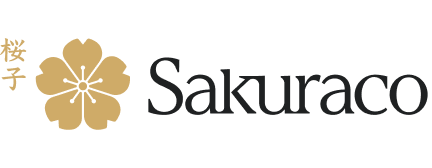chado tea utensils
Chado Tea Utensils You Need for a Tea Ceremony!
James Lau
Posted on March 14, 2025
Share:
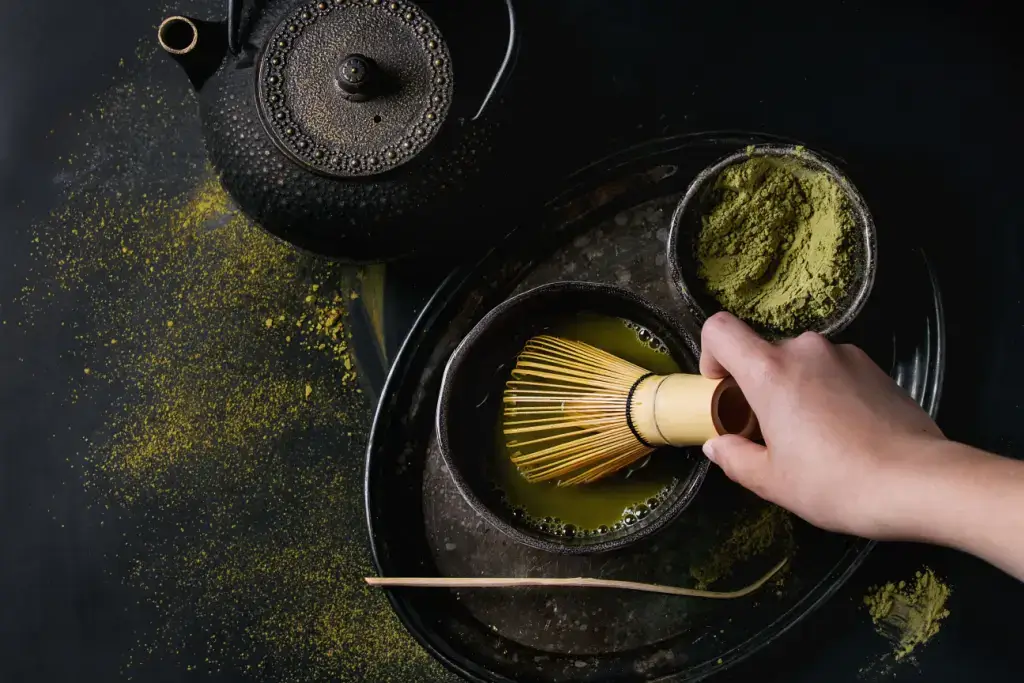
The Japanese tea ceremony is a beautiful tradition that values harmony, respect, and mindfulness. To fully experience chado, having the right tea utensils is important. Each tool has a special purpose, from preparing and serving tea to creating a peaceful atmosphere. Proper utensils help preserve the tradition, and by understanding their importance, you can appreciate the deep cultural roots of this art.
What is a tea ceremony?
The Japanese tea ceremony, chado or chanoyu, is a traditional ritual in which people prepare and drink matcha. It is a way to bring peace, respect, and harmony to those participating. The ceremony involves careful steps, including how participants make the tea, handle the utensils, and behave as guests. Practitioners often conduct it in a special tearoom or garden, creating a calm and respectful atmosphere.
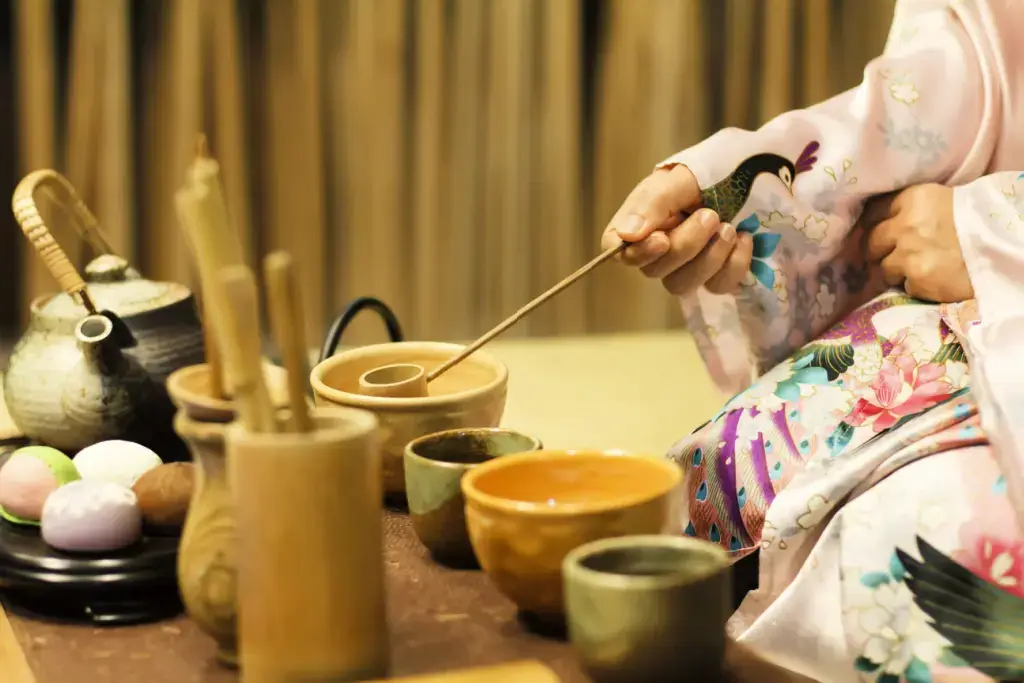
This tradition has been an important part of Japanese culture for centuries. Zen Buddhism, which teaches self-discipline and living in the moment, was its greatest influence. The host spends years learning how to prepare tea, arrange the space, and serve guests with care. Guests also have special roles, such as admiring the tea utensils and showing gratitude. Through this ceremony, people connect with tradition and each other.
What utensils do I need for a chado tea ceremony?
Tea Preparation Utensils
Tea preparation is one of the most important parts of the Japanese tea ceremony. The chawan, or tea bowl, mixes and drinks the matcha. The chasen, or bamboo whisk, blends the tea with hot water, creating a smooth and frothy texture. The chashaku, a small bamboo scoop, measures the right amount of powdered tea for each guest. People choose each item by the current season and the type of tea they want to prepare.
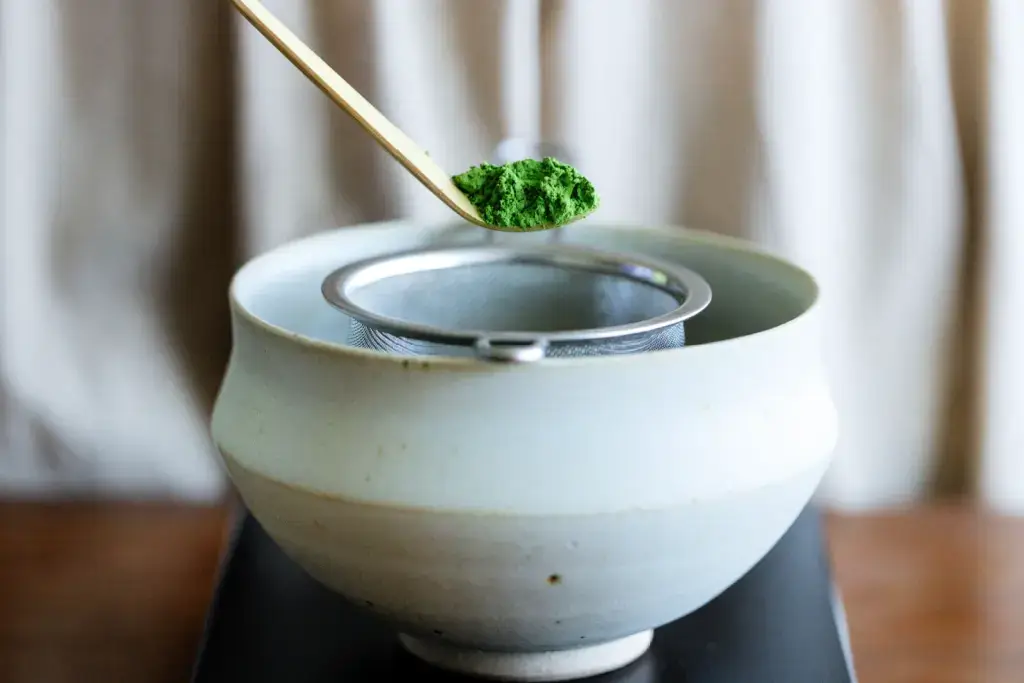
Using these utensils properly is key to making a good bowl of tea. The host scoops a small amount of matcha with the chashaku and places it into the chawan. These tools help bring out the best flavor of the tea while showing respect for the tradition and guests.
Water-Handling Utensils
Water plays a crucial role in the tea ceremony. Participants use the hishaku, a bamboo ladle, to scoop hot water from the kama, or iron kettle, into the tea bowl. They place the kama over a fire or a heated surface to keep the water at the right temperature. Another important item is the mizusashi, a container with fresh and cold water for rinsing utensils and maintaining cleanliness. Generally, these items ensure the water is handled properly and kept pure.
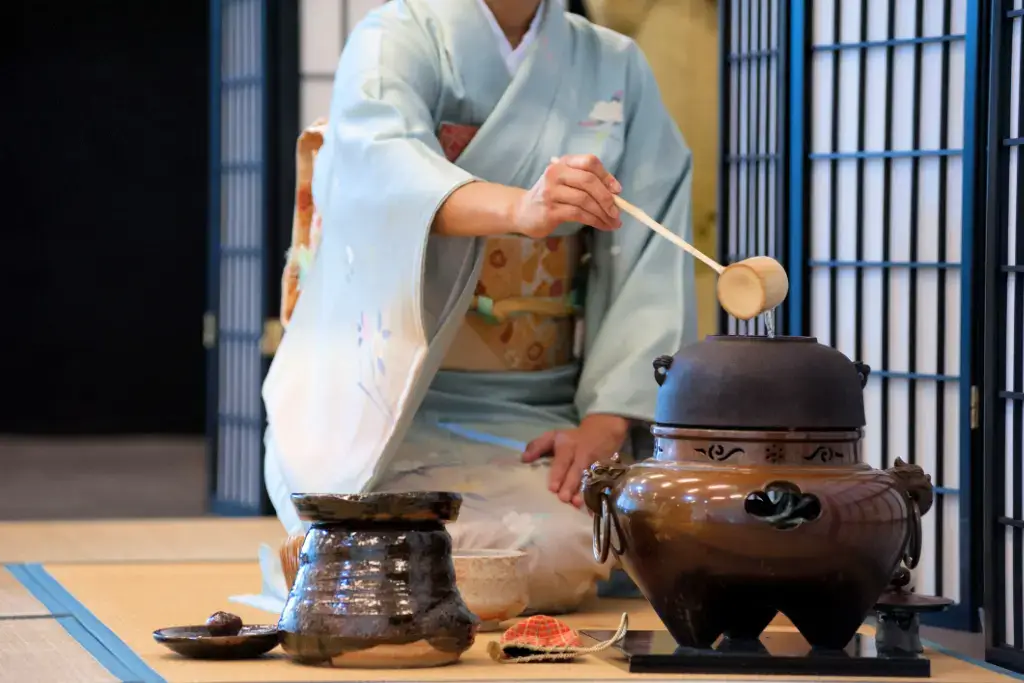
The host pours and handles the water in the ceremony with care and mindfulness. They use the hishaku with smooth, graceful movements to show respect for the process. The host carefully places the mizusashi in the tearoom, reminding guests of the importance of cleanliness and balance. The kama keeps the water warm, preparing the tea at the perfect temperature.
Serving and Presentation Utensils
Serving the tea to guests is just as important as preparing it. Participants use the natsume, a special container, to hold matcha before scooping it into the tea bowl. Artisans usually make it from lacquered wood and decorate it with beautiful designs. Hosts use the chakin, a white linen cloth, to wipe and clean the tea bowl before serving the tea. The host also uses a fukusa, a silk cloth, to carefully wipe and handle tea utensils.
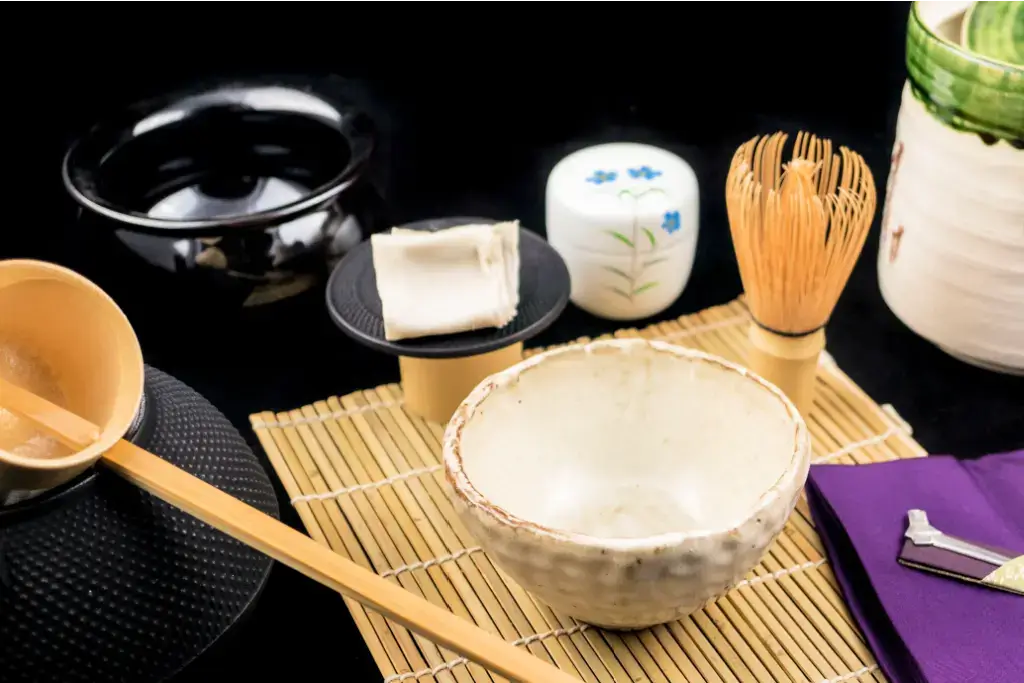
The way people use these utensils follows a strict and graceful routine. The host cleans the chawan using the chakin, showing their care and attention to detail. Then, fold the fukusa specifically and purify the chashaku and other utensils. Finally, they handle the natsume gently to show respect for the tea inside. Every step in using these items adds to the beauty and tradition of the tea ceremony.
Are you looking for great tea from Japan? Check out Sakuraco! Sakuraco delivers traditional Japanese snacks, teas, and sweets from local Japanese makers directly to your door so you can enjoy the latest delicacies directly from Japan!
Decorative and Symbolic Utensils
Some tea ceremony utensils are mainly used to decorate and create a peaceful atmosphere. One example is the chabana, a simple flower arrangement placed in the tearoom to reflect the season. The kakejiku, or hanging scroll, usually has calligraphy or painting that sets the mood of the gathering. The ro, or sunken hearth, is used in winter to warm the tearoom, while the furo, a portable brazier, is used in summer.

Although these items are not directly used to prepare tea, they play an important role in the experience. The chabana reminds guests to appreciate nature and the changing seasons. The kakejiku often has a meaningful message or Zen phrase that encourages mindfulness. The ro and furo provide warmth and comfort, making the tea gathering more enjoyable. Together, these decorations help create a calm and respectful atmosphere.
Why should I get the right chado tea utensils?
You should get the correct chado tea utensils because they ensure the tea is prepared properly and taste its best. Each tool, like the chasen and chawan, is suitable for mixing and serving matcha smoothly. The tea may not have the correct texture or balance of flavors without the right utensils. The materials and craftsmanship of these tools also enhance the experience, making every step feel more special.
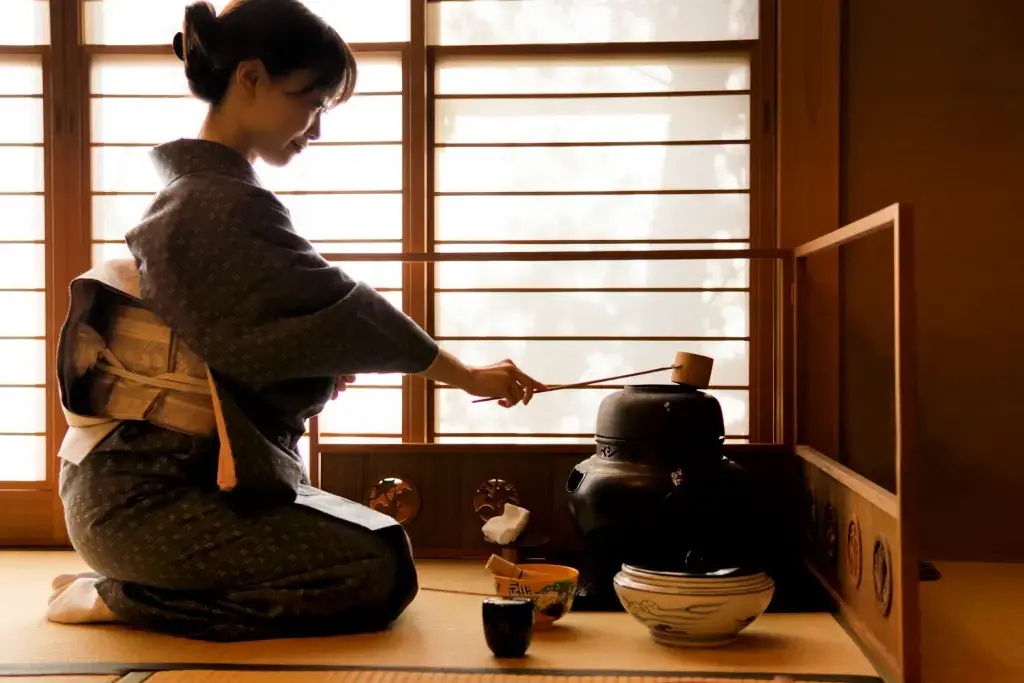
Moreover, the right utensils help create a peaceful and respectful atmosphere central to chado. Items like the chakin and fukusa are specifically for cleaning and handling other tools. Decorative items, such as the chabana and kakejiku, help set the mood. When all utensils are chosen and used correctly, the ceremony becomes a meditative and immersive experience. Have you ever participated in a tea ceremony? What was your experience like? Let us know in the comments below!
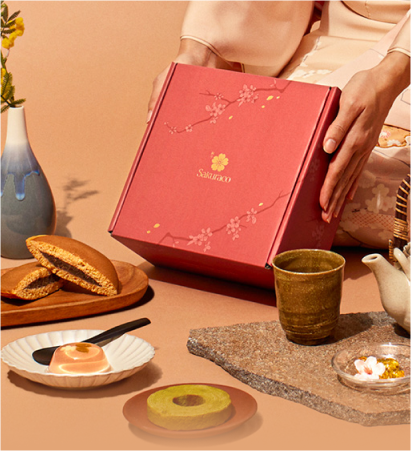
Discover authentic flavors with Sakuraco
Get Sakuraco 

Discover authentic flavors with Sakuraco
Get Sakuraco 
Related Articles
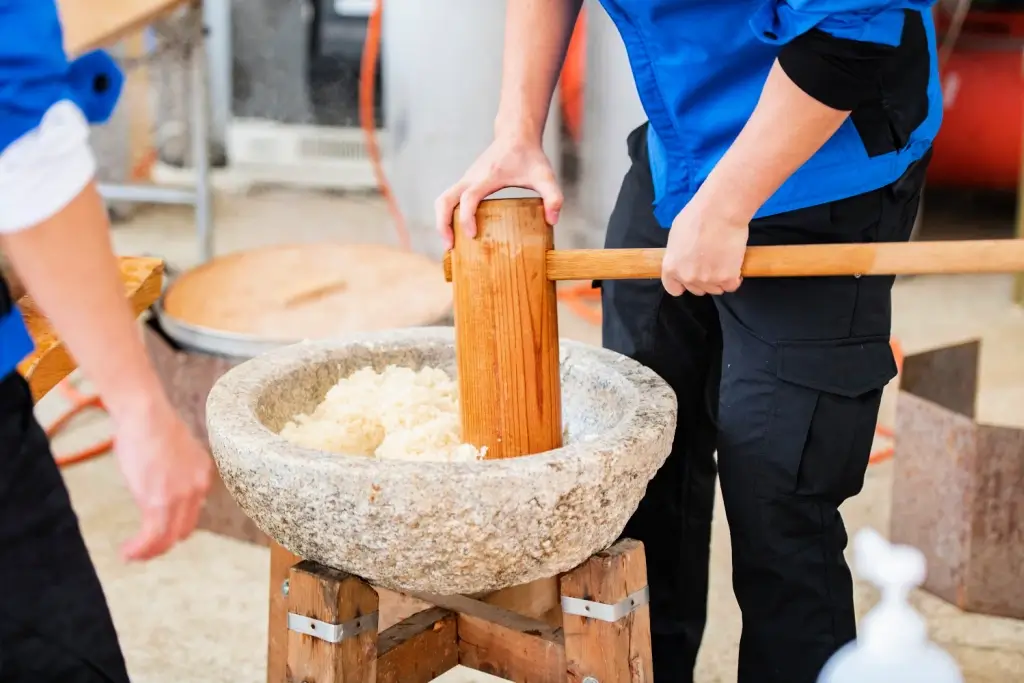
Mochi: How is Mochitsuki Made in Japan?
Mochitsuki is the Japanese tradition of pounding steamed rice to make mochi for the New Year. Families and neighbors gather to participate in this lively and meaningful tradition. The teamwork involved helps everyone feel a sense of connection.
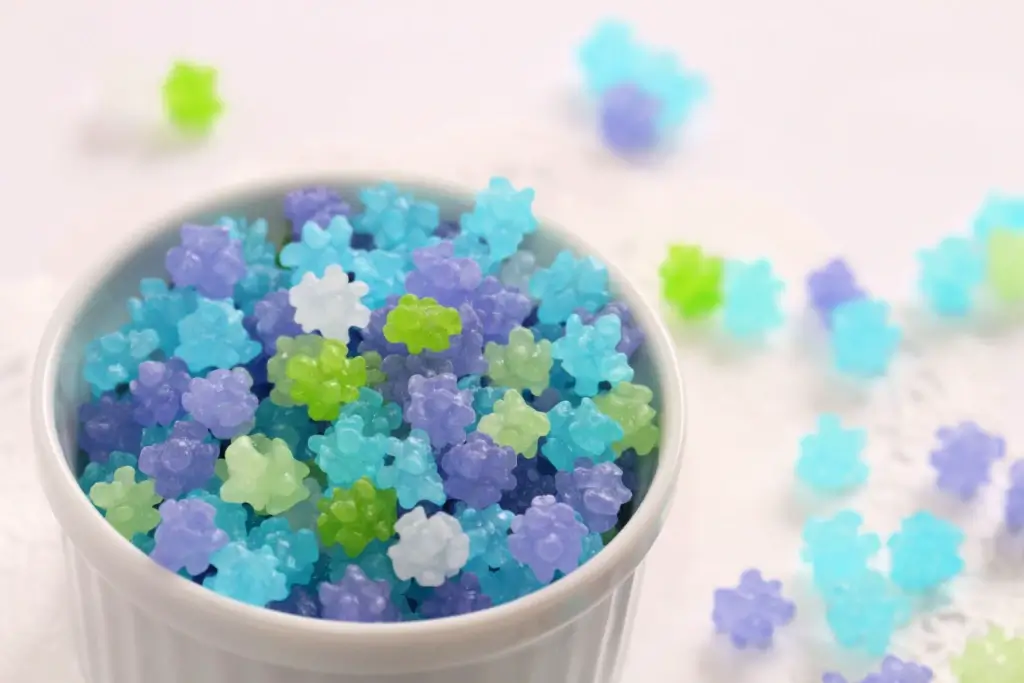
Konpeito Candy: What Makes This Starry Treat Shine?
If you are a fan of the famous Demon Slayer series, then you probably know that the favorite treat of the adorable Nezuko Kamado is those tiny, colorful little sweets.
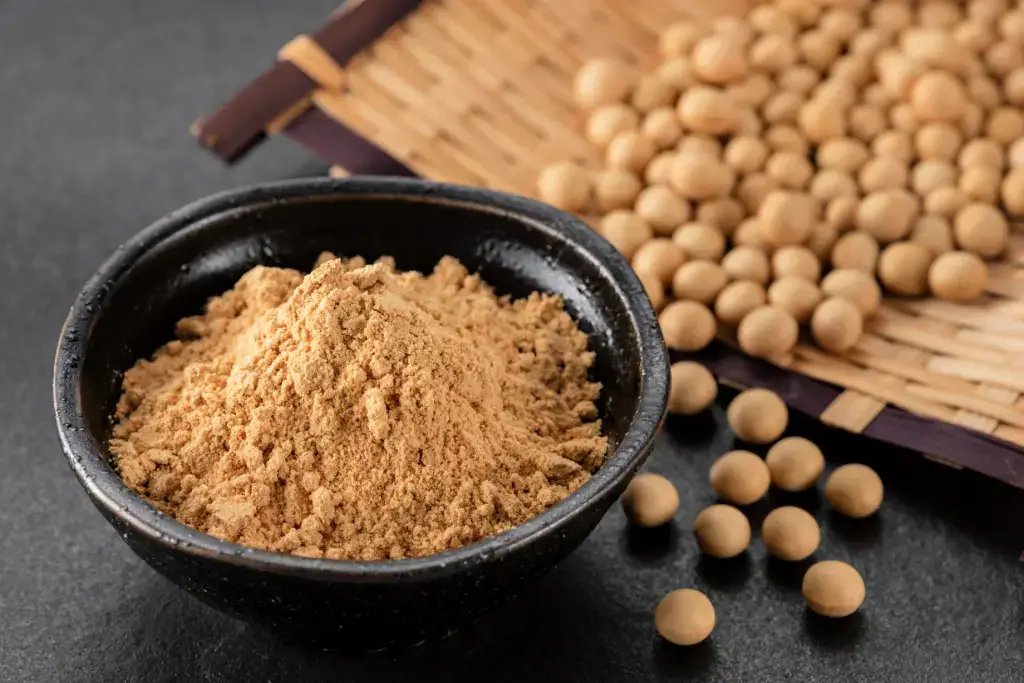
Kinako: The Amazing Roasted Soybean Powder!
Kinako is a very popular ingredient that can easily be found in many traditional Japanese sweets. It has a distinctive flavor, standing alongside other classic tastes such as red bean or sesame. Let’s explore this charming ingredient together, and who knows, you might even be able to make it in your own beloved kitchen!
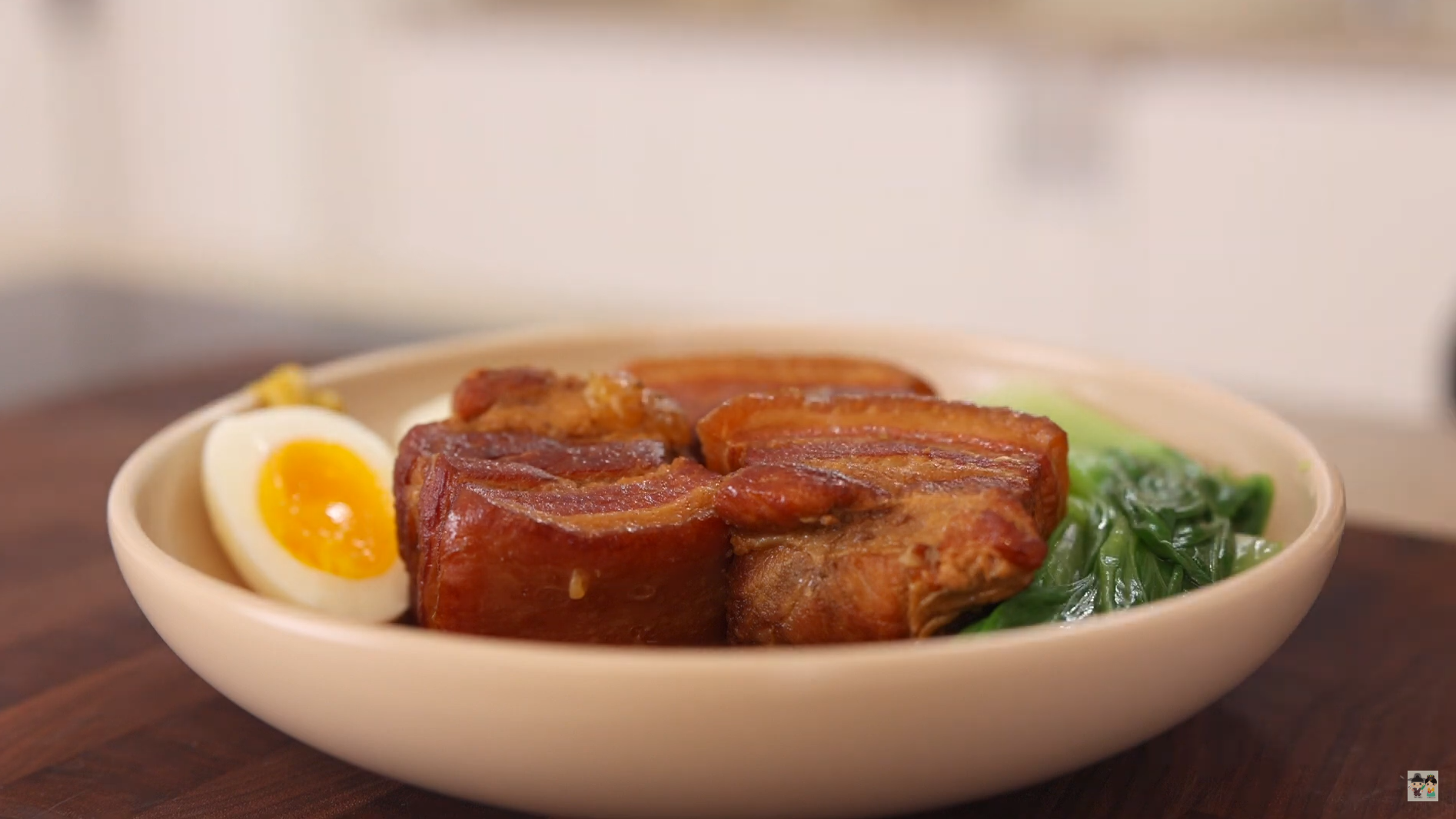
Aaron and Claire Make the Ultimate Japanese Pork Belly: Buta no Kakuni
If you want a Japanese dish that’s rich, tender, and simple to follow, Aaron and Claire show exactly how to make it in this episode. Aaron prepares Buta no Kakuni, a classic braised pork belly dish renowned for its rich flavor and tender texture.

